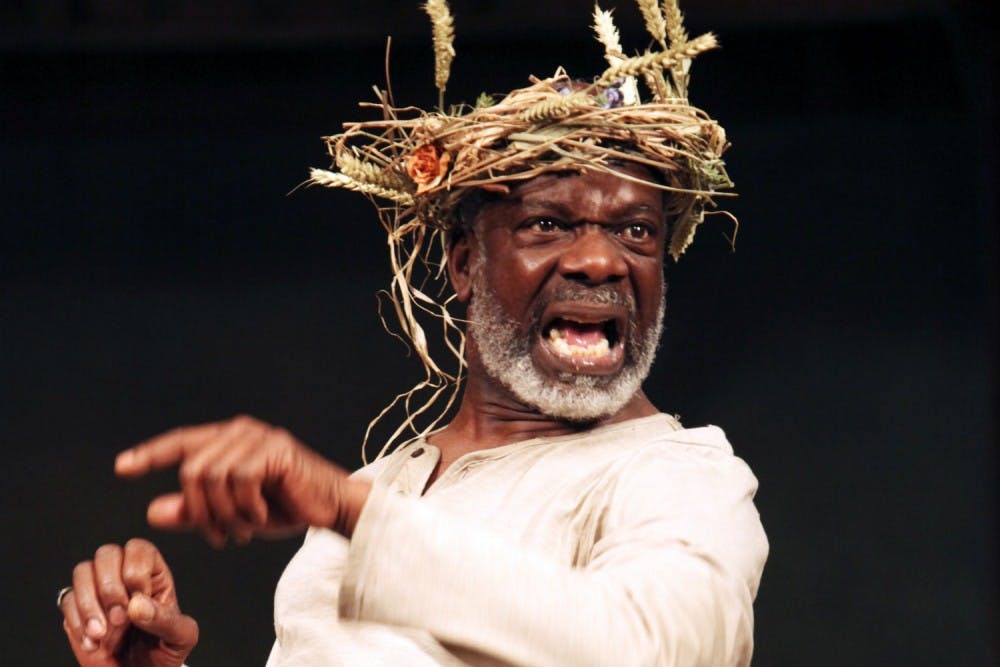Last week, The Shakespeare Globe came to the Annenberg Center for the Performing Arts to perform King Lear. The production is touring on small scale, Elizabethan–style stage, choosing to keep the house lights on for the entire performance in order to mimic the outdoor stage experience the audience would have at the real Globe. Everything going on in the show happened on the stage. Many of the costume and set changes were on stage, and the actors made all of their own sound effects. There was no special lighting or background music that was not produced on the stage itself.
King Lear is arguably the most challenging of Shakespeare’s plays to perform. The titular king is supposed to be in his eighties and many other characters have to be evil but not totally one–dimensional. Having seen multiple other productions of the play, I left this one feeling confused and disappointed, after having such high hopes for the company that carries the name of Shakespeare’s original theater.
The rendition of the play assumed a lot of previous knowledge from the audience. Granted, it is probably fair to assume that their audience is full of Shakespeare fans, who have studied, or at least read, the play’s text before. Even though this was true for me, it was not for many of the Penn students I was surrounded by. On a university campus where student tickets were being sold for ten dollars, the seats weren’t only filled with Shakespeare freaks or Theater Arts majors. It is particularly bothersome that pre–knowledge was assumed when considering that no one in Shakespeare’s time would have been able to read the text before going to the theater.
What made the show the most challenging for a non–familiar viewer was the fact that six of the nine actors had to portray more than one character. Usually slight additions or subtractions to costumes helped to clarify, but it still required extra attention from the audience. However, Bethan Cullinane did a particularly good job as both Cordelia and the Fool, while Alex Mugnaioni stole the show when he was portraying Poor Tom. The costumes belonged more in a Jan Steen painting than in pre–Christian Britain. Throughout the show, the actors randomly burst into a sea shanty or two, despite the fact that no one in the play travels anywhere by sea.
While it was definitely entertaining at points and picked up significantly after intermission, the play ended up feeling longer than the three–hour run time. The Globe Theatre On Tour’s performance did not stick to the original enough to feel like a real loyal tribute, but it did not deviate enough to be a fresh or modern take on the text. I stopped thinking about the play about five minutes after I had left, which is not the way anyone should feel after encountering one of Shakespeare’s most thought–provoking pieces.







